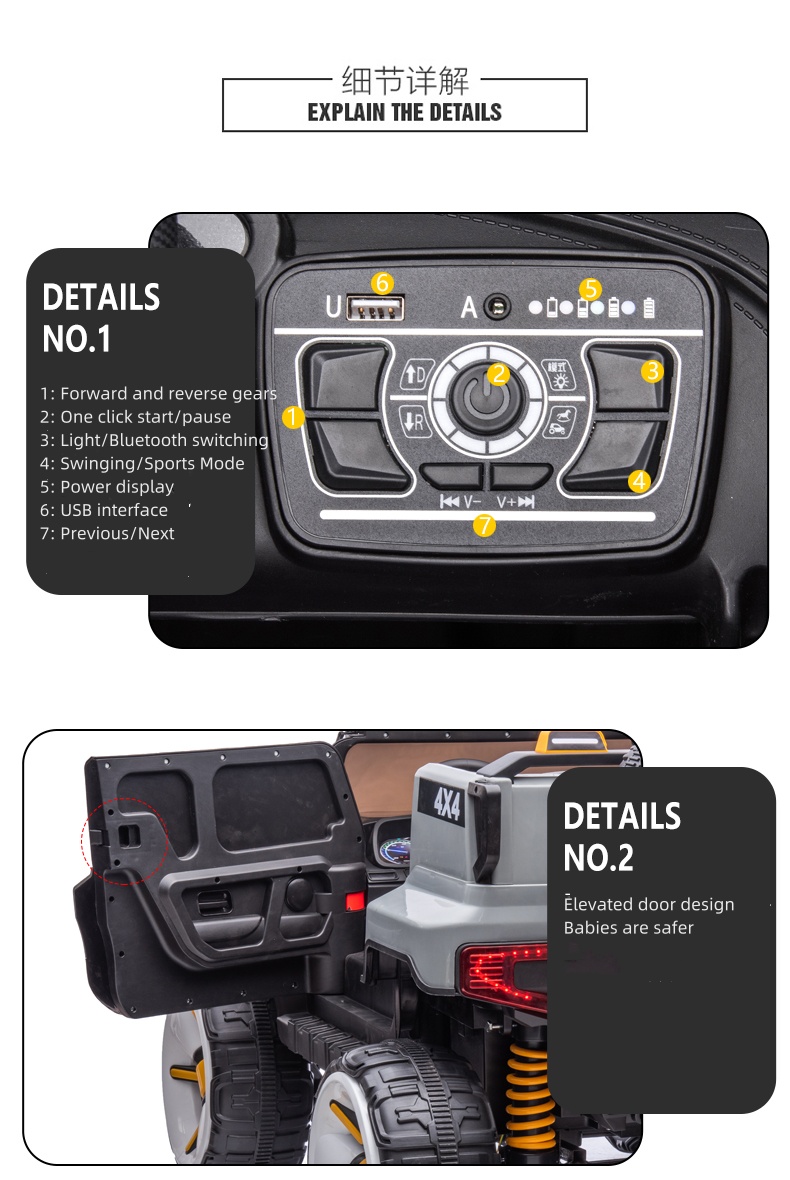How to Replace the Battery in Your Self Balancing Scooter Effectively and Safely
Battery Replacement for Self-Balancing Scooters A Comprehensive Guide
Self-balancing scooters, often referred to as hoverboards, have become a popular mode of transportation and recreational activity. Their sleek design, ease of use, and zero-emission appeal attract a wide range of users. However, like any electronic device, the battery that powers these scooters will eventually wear out. Knowing when and how to replace the battery is essential for maintaining optimal performance and ensuring safety.
Understanding the Battery
Most self-balancing scooters utilize lithium-ion batteries, known for their efficiency and longevity compared to traditional lead-acid batteries. Typically, these batteries have a lifespan of 300 to 500 charge cycles, which translates to about 1 to 3 years of use, depending on the frequency of use and care. Signs that your battery may need replacement include decreased ride time, unusual sounds during charging, or the scooter not turning on at all.
Signs You Need a Replacement
1. Decreased Range If you notice that your scooter isn’t traveling as far on a single charge as it once did, it may be time for a new battery. 2. Longer Charging Time A battery that takes significantly longer to charge than before could indicate that its performance is deteriorating.
3. Swollen Battery A physically swollen battery is a serious safety hazard and should be replaced immediately.
4. Frequent Shutdowns If the scooter shuts down unexpectedly during use, the battery may be failing to provide adequate power.
Choosing the Right Replacement Battery
When it's time to replace your scooter’s battery, selecting the right one is crucial. Follow these guidelines to make an informed decision
1. Compatibility Always check the specifications of your current battery. Look for the voltage (typically 36V or 42V) and the capacity (measured in Ah, or Amp hours) to ensure the replacement is compatible.
self balancing scooter battery replacement

2. Quality Opt for high-quality batteries from reputable manufacturers. While cheaper options may be tempting, they often compromise on performance and safety.
3. Warranty Choose a battery that comes with a warranty. This not only guarantees the quality but also offers peace of mind in case of premature failure.
Installation Process
While some may choose to replace the battery themselves, it can be a delicate process. Here’s a brief overview of the steps involved
1. Safety First Ensure the scooter is turned off, and disconnect it from any power source.
2. Remove the Casing Use a screwdriver to remove the screws holding the casing of the scooter. Be cautious and gentle to avoid damaging any components.
3. Disconnect the Old Battery Identify the battery connections and carefully unplug them. It’s advisable to take pictures during this step to remember the configuration.
4. Install the New Battery Connect the new battery to the scooter, ensuring all connections are secure. Replace the casing, making sure everything is fitted correctly.
5. Test the Scooter Once the new battery is installed, take the scooter for a test ride to check for proper functionality.
Conclusion
Regular maintenance and timely battery replacement are vital to prolonging the life of your self-balancing scooter. By recognizing the signs of battery failure and following proper replacement procedures, you can ensure that your hoverboard continues to operate safely and effectively. Remember, investing in a high-quality battery not only enhances performance but also prioritizes safety, allowing you to enjoy your rides without worry.
-
Children's Tricycle: Enlarged Seat, Sunshade & Safety Push BarNewsAug.31,2025
-
Sports Kids Bike: High Carbon Steel Argon Arc Welded Frame | Beautiful GiftNewsAug.30,2025
-
Ultimate 24V Children's Car: Power, Fun & Safety for KidsNewsAug.29,2025
-
Children's Electric Car Ride Ons: 2-Seater, Bumper & Audi ModelsNewsAug.28,2025
-
Understanding Voltage in Battery for Children's Motorized CarNewsJun.05,2025
-
Safety Features to Look for in an Electric Car for KidsNewsJun.05,2025
